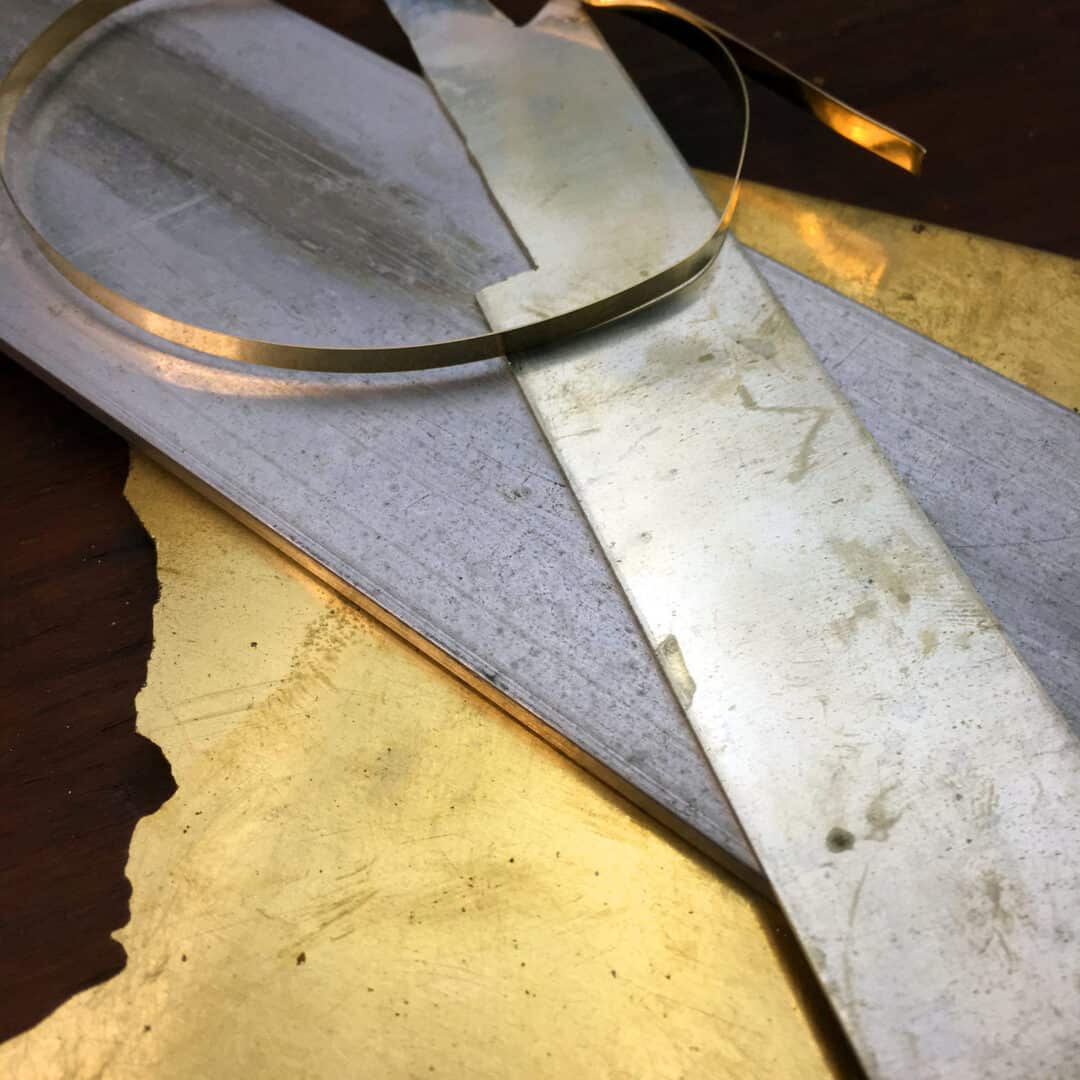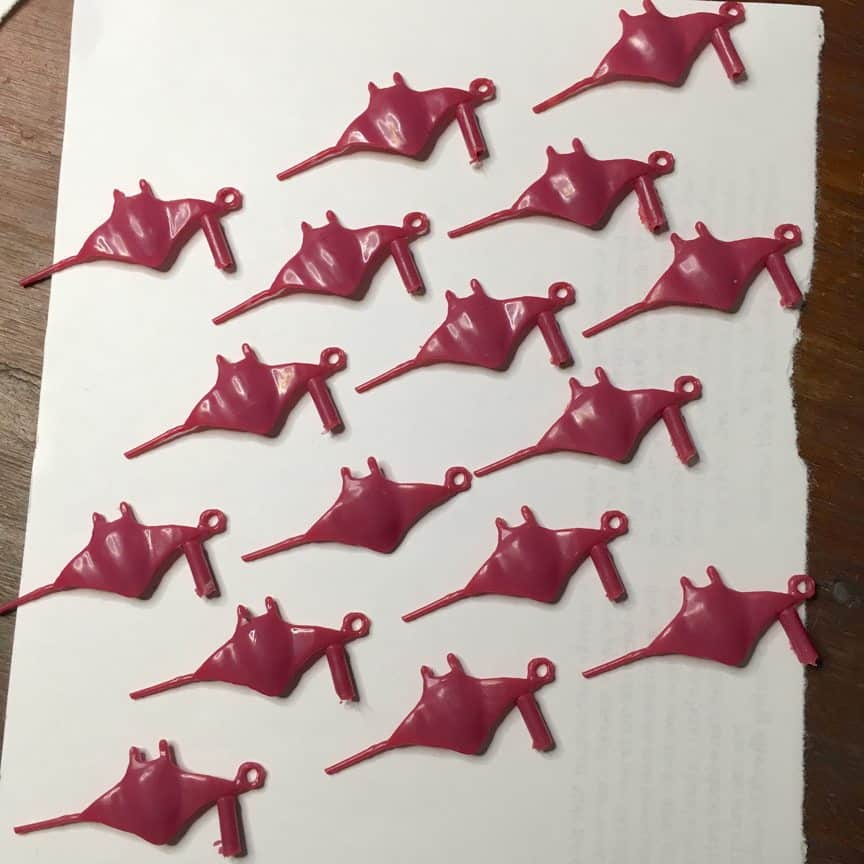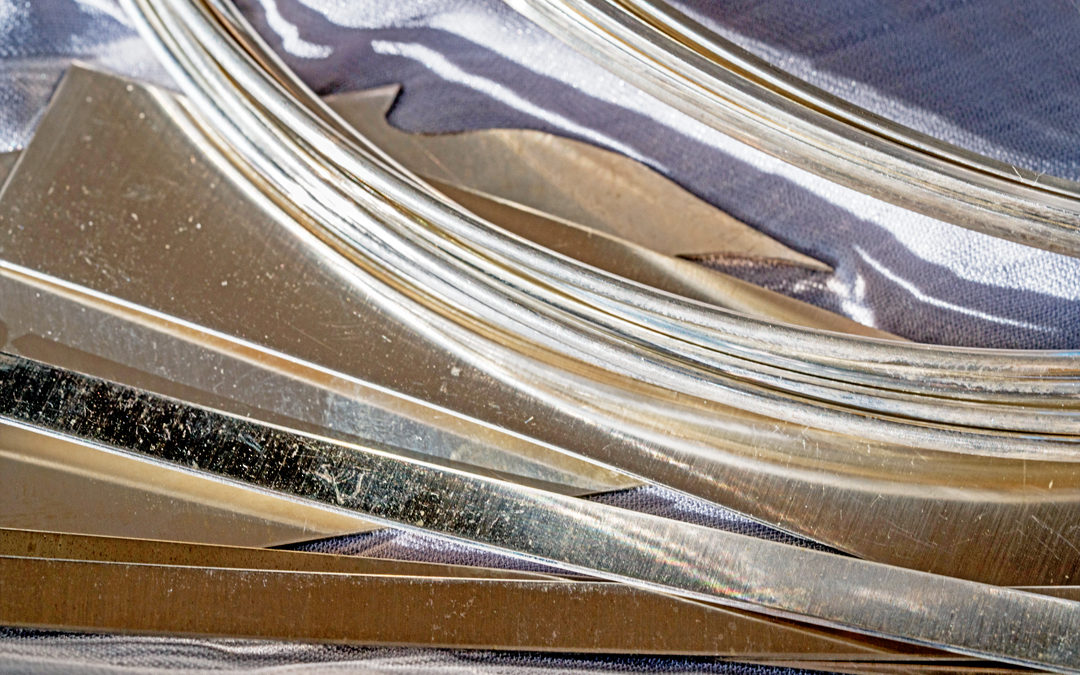Metals & Production – Jewelry Pricing Part II
Continued from part I – what creates value in a piece of jewelry? Getting a basic understanding of what a maker looks at when figuring out a price will help you determine what you’re buying, and also help you understand what you want. Last time we discussed the key differentiators labor and gems, today I want to cover precious vs base metals, metal quantity, and production.
Types of Metals

Whether jewelry is made with precious vs base metal can have an enormous impact on the price and value of the piece, but also how it wears. The image above of a hand carved and cast shark and hand-woven chain maille chain is entirely sterling silver. If this were to be in base metal the price would certainly be a fraction of the price, but it would also not wear the same. A lighter metal such as aluminum would not hang well since aluminum is much less dense than silver, but also might turn your skin black! Made in copper, it would hang nicely, but would tarnish within a day and might turn your skin black or green.
Precious metals
These include silver, gold, platinum, and more recently, palladium. On quality jewelry there should be quality marks to tell you what metal it is. The prices of precious metals fluctuate with markets, and in times of soaring metal prices, precious metal jewelry pricing increases with it. Most people are familiar with different gold purity (karats) 14K and 18K being the most common.
There are also different purity levels for silver (find more on our precious metals blog post), but the most important thing to note is that sterling is always a minimum of .925 pure. Anything less is not technically considered sterling silver. 100% pure silver is called “fine silver” and is very very soft, too soft for silverware and most jewelry.
Base metals
These can be any non-precious metal or metal alloy, and can include copper, tin, zinc, aluminum, nickel, and more. Find out more about them here. These metals are more commonly found in nature and always cost less than precious metals. An affordable option in gold jewelry is to use gold fill – made from base metal with a thin layer of gold bonded to it. If the price is so much more affordable why not make everything from it? One of the downsides to base metals is that they tarnish much more quickly, and are more reactive to skin. Plated base metals is one way to combat this, however lesser quality plating may mean your precious metal layer will rub off in a few months or even days. Another drawback is that the tarnish on base metals can migrate through the plating, and you will have marked discoloration on your plated finish. If you find “silver” jewelry that’s really really inexpensive, ask where the silver is from, and what the purity is. There is something called nickel silver that has no silver in it at all (and can cause quite bad skin reactions on sensitive skin). Some countries don’t have rigorous labelling laws as we do in the US and EU so less than .925 silver is used. Most costume jewelry is all base metal. Often costume jewelry is gold plated base metal – be aware that high quality costume can be beautiful and lasting, but gold on cheaper pieces can rub off in a few wears.

The final area to cover is about manufacturing. As with most things, mass produced products are cheaper. Economies of scale brings the per piece down significantly. If a piece of jewelry goes into mass production – think most department stores, and big brands – it will certainly drive the price down. They make thousands of pieces, mass finish and mass plate them. Access to large audiences craving inexpensive purchases means big profits on large quantities.
Smaller producers on the other hand, make fewer things, but by hand. A higher quality standard can be maintained in small batch production – cocktail and beer aficionados will associate the term ‘small-batch’ with a better breed of drink! – and there are many details that are only achievable when made in small quantities. This is not to say that all mass production is cheaply made, nor that all hand-crafted is high quality! That wouldn’t be accurate either. But while inexpensive and fast is not inherently bad, there is a great cost in mass manufacturing which we touch on in our blogs on slow living. The cycle of over production affects land and farming and oceans, and if you are concerned with conservation or global warming, slow vs fast is something to consider.
The question comes down to one of choice. Do you prefer a lower quality, throwaway piece to re-purchase each season or higher quality one that lasts a long time? There are also questions of waste disposal, environmental impacts, over-production and over-consumption consequences to be considered as well. One down side of the overseas approach is that our local economy doesn’t benefit, and our overall competitiveness as an economy suffers. This may or may not bother you, but its quite important to some. We urge you to consider these things on your next purchase! Ask questions. Most makers would be overjoyed to tell you given the work they put into making and sourcing responsibly. If the seller can’t give you satisfactory answers, how do you know what you are purchasing if they don’t? Possibly more importantly, the more you invest in understanding your purchase, the more value you are creating in it for yourself, and there’s the bonus of a good story behind it as well!
